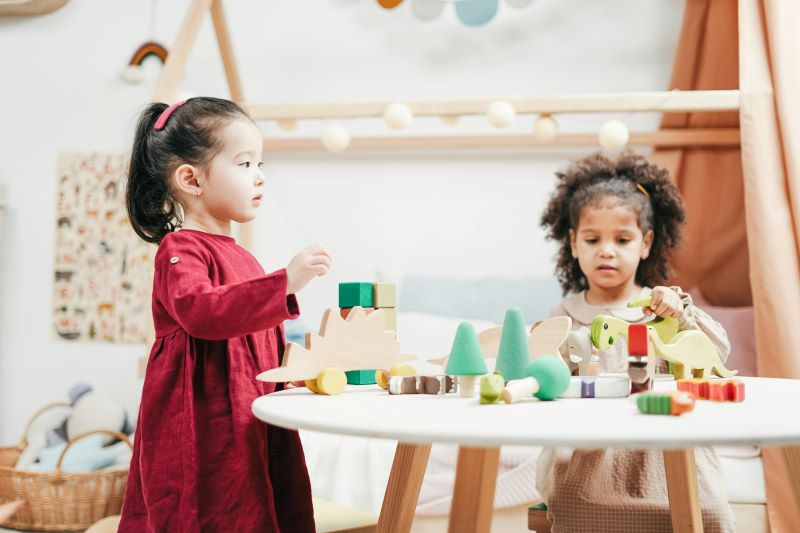Have you found your dream house? Great! The process must have been very overwhelming. So, you are probably happy it’s finally over. However, now it’s time to gather and organize your possessions. Refer to this moving into a new house checklist whenever you need some help.
We help you figure out every stage of the moving journey, from the things to do before moving into a new house to turning it into a cozy and safe space for you and your family. Let’s get started on this exciting journey!
Essential Things To Do Before Moving Into a New House
Knowing what to look for when buying a new house and putting a down payment on it is essential. But you must also ensure the house is ready for you to move in. Here are some tips for moving into a new house we consider helpful during the preparation stage:
Choose a Moving Method
Before moving into a new house, you must decide who is going to help you carry all of the heavy boxes. Of course, you can do it all by yourself, but others would rather skip that pressure and focus on something more important.
The moving methods you can choose from include:
- DIY: This method involves renting a moving truck and loading all your stuff into it to take to the new house.
- Professional: Hiring a professional moving company or service is an effective but more costly option for avoiding lifting heavy boxes and bringing them to a new home.
- Hybrid: If you want to save money but still make the moving process as convenient as possible, let professionals handle transportation while you load the stuff inside a moving container. You can also opt for the other way around—you worry about transportation, and they handle loading and unloading.
Get Moving Supplies
Although someone else can transfer your things to a new home, it’s only your responsibility, and no one else’s to put everything in boxes. You will probably need additional moving supplies like tape to keep everything sealed and prevent breakage. Also, purchasing some markers you will use later for labeling each box during the packing stage is a good idea.

Take Care of Any Repairs
Moving into a new house without eliminating potential obstacles may be troubling. Thus, make sure to conduct an inspection and make any necessary repairs beforehand.
- Re-Painting: Did you notice that the house you purchased doesn’t look like it has been freshly painted? Re-paint before you move to avoid paint from getting on your furniture, and cover the floors with plastic sheets for easy clean-up.
- Plumbing Issues: Moving into a new home won’t be effortless if you suddenly face plumbing issues. Thus, pre-move maintenance practices are required if the house’s faucets are dripping or the pipes leak.
- Leaky Roofing Systems: House inspections often reveal problems with the roof, which might cause severe problems if left unaddressed. If your new home’s roof leaks, treat it as quickly as possible or hire professional help.
- Poor Ventilation: If the house you purchased has an air conditioning unit, inspect its state to fix it if it’s broken or doesn’t provide adequate ventilation. This is crucial to avoid exposure to pollutants and prevent increased indoor humidity.
Arrange Utilities
Contact a utility service to transfer utilities, like electricity, TV, water, and internet, to the new home. Also, remember to evaluate the energy performance of the house you are moving into to determine the cost of future bills.
Keep Everything Organized
Having a checklist for moving into a new house is vital to organize your things and ensure nothing gets lost during the process. We recommend considering the following points to keep everything organized and protected:
- Inventory: Make a list of your belongings from every room to take proper inventory. You can also document your valuables by taking pictures of them and checking if they have been transferred to the new home.
- Donations: There is a high chance that some things you used in the previous home won’t match the aesthetics of your new house. Donate those items to someone who will make great use of them, whether it’s a carpet, clothing, or decorations.
- Storage: Some things hold too much of a sentimental value and you may not be ready to get rid of them. In such cases, you can put them in a storage unit where they will remain safe.
Free Some Space
Clutter is one of the biggest problems you may encounter when moving into a new house. There are too many things to organize and clean, and you may find paying attention to every item you bring challenging.
Moving boxes take up the most space and are unnecessary after you unpack everything. The fastest way to get rid of them is to hire a junk removal company or give them to someone else who may need them for a similar purpose.
Get To Cleaning
Moving supplies and repairing aftermaths can result in a messy home. So, before you move in, you must be prepared to thoroughly clean the entire property. The cleaning supplies you might need to remove dust and debris from your new house include:
- Vacuum cleaner
- Cloths for wiping dusty areas
- Glass cleaner
- Kitchen cleaner
- Toilet cleaner
- Rubber gloves
- Broom
- Mop and bucket
You are Ready for Packing!
Now that you have made the necessary repairs and cleaned all surfaces in the house, it’s time to start packing! First, begin gathering the non-essential items, like decorations, and leave the essentials, like kitchen tools, for last. Don’t forget to label each box for easier unpacking.
Since most of these things go in boxes, remember to pack a bag for the day you plan to move in. This bag should include must-haves like a wallet, keys, electronics, documents, toiletries, and a change of clothes.
Moving to a New House: Checklist
When you move in, you can breathe a sigh of relief that the most overwhelming times have finally passed. To make the process of finding a suitable place for all your belongings more effortless, we created a new house checklist you can follow during unpacking and settling in.
Unpack the Essentials
If you have labeled your moving boxes, unpacking the necessities will be a breeze. Simply pull out the things you need the most and organize them in the house rooms they belong to. Here is a moving into a new house checklist of essentials:
Living Room Necessities:
- TV
- Furniture
- Wall Decorations
- Rugs or Carpets
- Tables
- Lamps
- Picture Frames
Bedroom Necessities:
- Mattress
- Bed Sheets
- Blankets
- Pillows
- Bedframe
- Nightstand
- Wardrobe Closet
- Mirror
Kitchen Necessities:
- Cookware
- Cutting Board
- Knives
- Plates
- Forks
- Spoons
- Glasses
- Mugs
- Towels
- Dish Soap
- Garbage Can
Bathroom Necessities:
- Toilet Bowl Brush
- Toilet Paper
- Hand Soap
- Hand towels
- Bath Robes
- Shower Curtains
- Toiletries
- Trash Can
- Toothbrush Holder
- Laundry Detergent
Other Essentials:
- Electronics
- Chargers
- Ironing Board
- Iron
- Clothing Hangers
- Shoe Racks
- Gardening Tools
- Cleaning Supplies
Decorate the Indoor Space
After you find a suitable place for your necessities, it’s time to personalize the indoors with decorations to make the space feel homey. Even a few pieces of wall art or a new sofa can make a huge difference and make the house decor look fresh and brand new.
Take Safety Measures

Moving into a new home and decorating it to your liking is fun. However, you must also consider the most important thing during this process: your safety. Following these steps will help you protect everyone in the house from potential danger:
- Locks: You should change the front door locks because you don’t know who the previous owners gave the house key.
- Security Systems: Amp up the safety in the new home by installing security systems that alert when there is a disturbance or unusual behavior that might be dangerous.
- Warranty: Almost all previous owners leave the warranties in the home so that the new residents can easily find them and keep the information safe.
- Detectors: Install smoke and gas detectors in the new home to prevent exposure to harmful toxins.
- Protectors: Kids have a hard time adapting to new surroundings. Thus, ensure you perform child-proofing practices like protecting any doors or tables’ hard edges with covers.
- Pest Control: If the weather in the area where your new house is located is humid and very warm, you may have to deal with a lot of bugs. Luckily, a pest control service can help you get rid of them.




